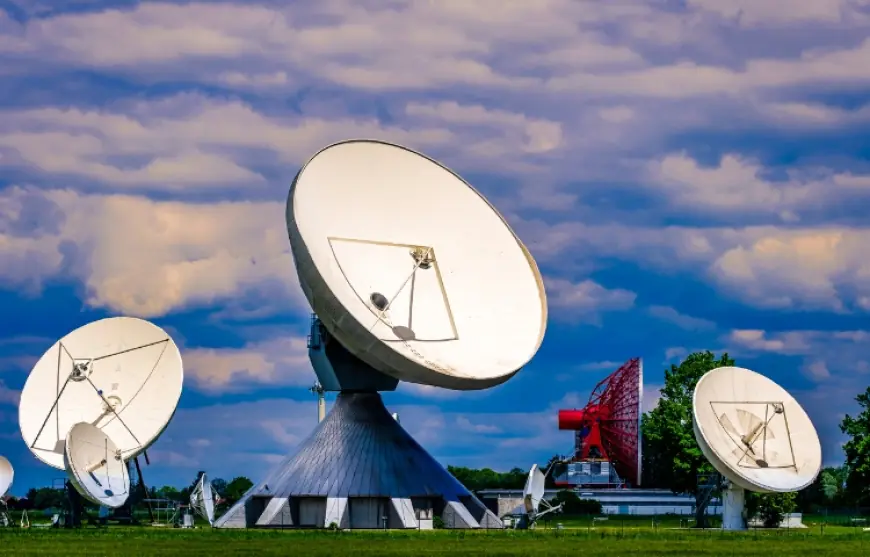Satellite Ground Station Equipment: How Earth Communicates with Space
Satellite ground station equipment is essential for enabling communication between Earth and orbiting satellites. This equipment includes antennas, receivers, transmitters, amplifiers, and modems, which work together to receive data from satellites and send commands back to them.

What Is Satellite Ground Station Equipment?
When we think about satellites, our minds often jump to what’s orbiting in space. But the real magic happens when those satellites connect with the Earth — and that’s where satellite ground station equipment comes in. As revealed by Professional Market Research Studies the Satellite Ground Station Equipment includes the antennas, receivers, transmitters, amplifiers, modems, and other gear that enable communication between satellites and Earth-based systems. Without it, satellites would just float silently in orbit, unable to send or receive any useful information.
How Does It Actually Work?
Here’s how it works in a nutshell: A satellite passes overhead and beams down signals. The ground station's antenna — which is often a large parabolic dish — locks onto the satellite’s path and receives those signals. Since they’re pretty weak by the time they hit Earth, the signals need to be amplified, filtered, and decoded using the rest of the equipment at the station. And when it’s time to send something back up, the process works in reverse. This is how things like GPS updates, TV signals, or satellite internet actually get delivered.
Different Types of Ground Stations
Ground stations aren’t all the same. There are large, fixed installations designed for continuous operations — often located in remote places to reduce signal interference. Then there are compact, mobile ground stations that can be deployed in trucks or containers. These are especially useful in disaster zones or military environments where setting up a permanent base isn’t practical. Some organizations even use remote-controlled or cloud-based ground stations, making them easier to operate across different regions.
What’s Changing in the World of Ground Station Equipment?
Ground station tech is evolving fast. One of the major shifts is toward software-defined ground stations, which rely more on flexible, programmable software than on fixed hardware. This allows stations to adapt more easily to various satellite signals without constantly replacing parts.
Another innovation on the horizon is the use of laser communication systems — essentially using light beams instead of radio waves to send data. This type of setup can deliver higher bandwidth and stronger security, making it a strong candidate for future communication needs, like high-resolution imaging and global internet coverage.
There’s also a growing interest in the “Ground Station as a Service” model. This lets satellite operators lease time and bandwidth from shared ground stations rather than building their own. It’s especially helpful for startups or smaller satellite operators who want global coverage without the high costs of infrastructure.
Ongoing Trends in the Industry
The increase in satellite launches, especially low Earth orbit (LEO) satellites, is pushing the need for more dynamic ground station infrastructure. These satellites orbit closer and move faster, so they require more frequent handovers between ground stations to maintain connection. Companies are responding by building new networks and modernizing old stations to keep up with these demands.
Recent trials in countries like China have even shown that laser-based internet connections from satellites to ground stations can work in real-time conditions, hinting at the possibility of 6G and beyond. And in crisis zones, mobile ground stations have been vital in restoring communication when traditional networks are down. Their ability to deploy quickly and operate in harsh conditions makes them critical for emergency and defense use.
Why Does It Matter to You?
Even if you never see a ground station, it touches your life more than you might think. That little blue dot on your phone’s GPS, the weather updates you rely on, the live news broadcasts from across the globe — all of these rely on the invisible thread between satellites and Earth. And that thread runs through satellite ground station equipment.
As technology continues to shift, and more services go space-based, these systems will only become more vital. From enabling internet in rural areas to supporting climate research, this quiet tech backbone is what keeps Earth connected to the stars.
What's Your Reaction?
 Like
0
Like
0
 Dislike
0
Dislike
0
 Love
0
Love
0
 Funny
0
Funny
0
 Angry
0
Angry
0
 Sad
0
Sad
0
 Wow
0
Wow
0

















































